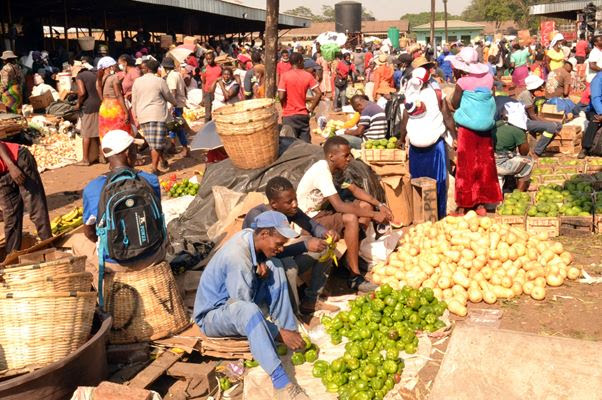|
Getting your Trinity Audio player ready...
|
By Charles Dhewa
While malnutrition is expected to be less in areas that have favourable climates for producing diverse food, undernutrition remains a key characteristic of high production zones across Africa. It is rare for a single area or community to produce an entire balanced food basket throughout the year. The seasonal nature of rainfed agriculture translates to an abundance of food in summer and less in winter or vice versa.
Due to poor food preservation practices, food that should last a whole year in a fresh state only lasts for a few months. Another contributor to undernutrition in high rainfall areas is too much emphasis on non-food cash crops like tobacco which end up grabbing all resources including inputs and labour at the expense of nutritious food.
Markets to the rescue
It is through local markets that communities are able to access nutritious food from other regions including from neighbouring countries. Even if communities try to be self-contained by producing all their food, some nutritious commodities do better elsewhere. For instance, small grains do very well in dry regions such that high rainfall regions are better off depending on those regions than trying to produce their own small grains.
Besides setting prices and facilitating the exchange of commodities and knowledge, mass markets are incredible distributors of nutrition. However, the appropriate positioning of commodities in the market has a huge bearing on people’s access to nutritious food. In some cases, changing the position of commodities in the mass market can result in at least a 20% loss of customers as they have to locate what they want to buy. This is because consumers follow a certain trend when purchasing commodities in the mass market. For instance, they start with necessities like tomatoes and leafy vegetables, then high-value crops like peppers, followed by less perishables like potatoes and lastly field crops.
Traders are the ones who can position commodities in the market as informed by knowledge of how customers move in the market. However, when traders are selling commodities in the mass market, the lowest prices are used to attract customers. While farmers listen for high prices on the radio, consumers listen for low prices. On the other hand, supermarkets do not have price ranges. They only sell in kilograms (units of measurement) – one price per unit of measurement. A kilogram of meat is just a kilogram irrespective of nutrition. Tomatoes are also sold by weight but that cannot be ideal for selling indigenous vegetables no matter how nutritious they are.
Safe-guarding nutrition
In order to sustain and safeguard nutrition in food markets, supply chains and food distribution systems should not be in the hands of individual traders who may not be interested in nutrition but focus on what makes more profit irrespective of nutrition content. Production and supply plans should be held by an institution responsible for aggregating production statistics as well as an institution responsible for nutrition monitoring. In the absence of formal institutions, traders have a way of mapping what has been planted and when it will be due for the market. This applies mainly to potatoes, cabbages and butternuts. That is how traders end up estimating volumes coming to the market and keep that information away from government institutions and policymakers.
The link between nutrition and medicine
In addition to distributing nutrition to areas of need, African mass markets are good at demonstrating the extent to which food and nutrition security is a medical issue. Government departments that struggle to show the strong link between food and health due to a lack of data-based approaches can learn a lot from mass food markets. Local food markets show how access to high-quality nutrition boosts the health and well-being of all consumer classes including low-income households.
In a rapidly changing climate characterized by unpredictable rainfall patterns, farmers, processors, traders, mass markets and distributors have a significant role in improving nutrition in ways that positively impact the health of communities including food producers. That is why every market needs data in order to aggregate nutritious commodities properly. Data should not expire the way data bundles are deliberately made to expire by mobile network providers so that consumers continue buying. Putting an expiry date on data bundles forces farmers to exhaust their bundles within a week and end up spending it on conversations that do not add value to their nutrition and well-being.






